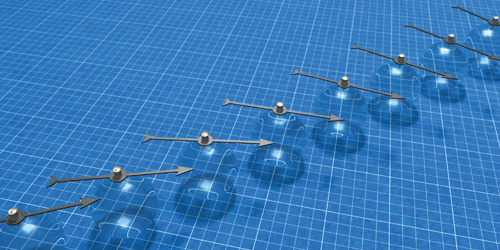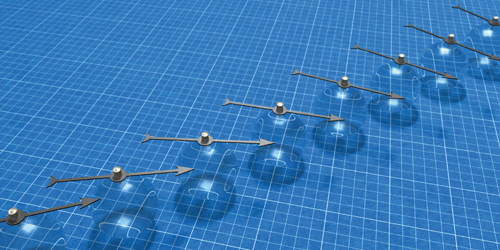Magnon Drag
Push a sheet of sandpaper past a second sheet, and a mutual friction between them drags the second sheet along. An analogous effect called Coulomb drag occurs in two closely spaced two-dimensional electron gases: interlayer Coulomb interactions cause electrons flowing in one gas to drag along electrons in the other, generating a current. A theoretical study by Michael Flatté and Tianyu Liu from the University of Iowa, Iowa City, and Giovanni Vignale from the University of Missouri, Columbia, predicts that quantized spin waves dubbed magnons could experience a similar phenomenon in two spatially separated ferromagnetic layers.
The researchers studied magnon transport in this system using a semiclassical Boltzmann approach—a statistical treatment of particle transport in solids. They showed that a steady magnon current running in one of the two layers drives a magnon current in the other layer—in the plane of the layer and generally at an angle to the driving current—through magnetic dipolar interactions between the layers. The effect induces a temperature gradient in the second layer (along the direction of the generated current) that can be observed. The findings may have implications for magnonics, the emerging field of spintronics that aims to build electronic circuitry based on spin currents carried by magnons. For example, the effect could limit how closely components could be put together in a magnonic circuit, because current flow in one component might contaminate the flow in another.
This research is published in Physical Review Letters.
–Ana Lopes
Ana Lopes is a Senior Editor of Physics.





